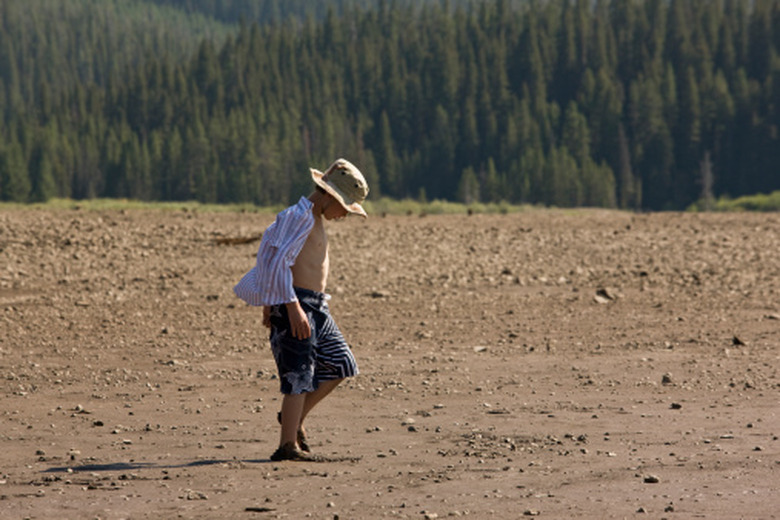What Is Soil Exhaustion?
Soil exhaustion occurs when poorly managed soils are no longer able to support crops or other plant life. Soil exhaustion has consequences beyond limited food production; it also increases risk of soil erosion. Proper soil management — including crop rotation, fertilizer applications and irrigation methods — helps decrease the potential for soil exhaustion.
History
History
Soil exhaustion occurred throughout agricultural history. Shallow plowing, lack of fertilization and increased productivity in the short term at the cost of long-term viability are the main contributors to soil exhaustion. Farmers in the Middle Ages as well as in colonial America relied heavily on one crop. Land was cleared, the crop planted and productivity was high for a number of years, but ultimately crops failed and the agricultural bubble burst. Single-crop agriculture depletes soil nutrients because the same nutrients are required year after year and the soil has no time to replenish its stores.
Crop Rotation
Crop Rotation
After the American Dust Bowl of the 1930s, experimental farms and new agricultural strategies were developed and farmers received better training. Crop rotation was an encouraged practice. Commercial corn farmers increased corn yields when they rotated from corn to soybeans to corn to hay. Home gardeners benefit from crop rotation as well. Avoid planting crops from the same family in the same spot year after year. Vegetable crops are rotated by family group, so nightshades like tomato, eggplant and potato should be rotated with a different family group such as the onion family, which includes onions, garlic and chives. Rotating crops not only prevents soil exhaustion but also limits crop diseases and insect infestations.
Fertilization
Fertilization
Fallow fields are not left bare. Cover crops like rye and oats are sown over them. Cover crops hold soil in place and, once plowed under, the uprooted cover crops provide organic bulk and nutrients to the soil, earning the name "green manure." Other fertilizers, in the form of compost, manure or synthetic blends, are incorporated annually into soil. Home gardeners should submit soil test samples to their local university extensions before planting their first garden and every few years thereafter. University soil scientists determine the amounts of nutrients in soil and provide recommendations that are crop and soil specific.
Considerations
Considerations
Agricultural communities in Africa and South America run the risk of depleting their soil resources in much the same way as farmers in colonial and Depression-era America did. Farmers in these communities are clearing land and practicing single-crop agriculture. They also face modern challenges such as chemical degradation of the soil. So although sustainable farming practices have emerged in the United States, soil exhaustion is still a global issue.
Cite This Article
MLA
Duffy, Catherine. "What Is Soil Exhaustion?" sciencing.com, https://www.sciencing.com/what-is-soil-exhaustion-13406891/. 21 July 2017.
APA
Duffy, Catherine. (2017, July 21). What Is Soil Exhaustion?. sciencing.com. Retrieved from https://www.sciencing.com/what-is-soil-exhaustion-13406891/
Chicago
Duffy, Catherine. What Is Soil Exhaustion? last modified March 24, 2022. https://www.sciencing.com/what-is-soil-exhaustion-13406891/
